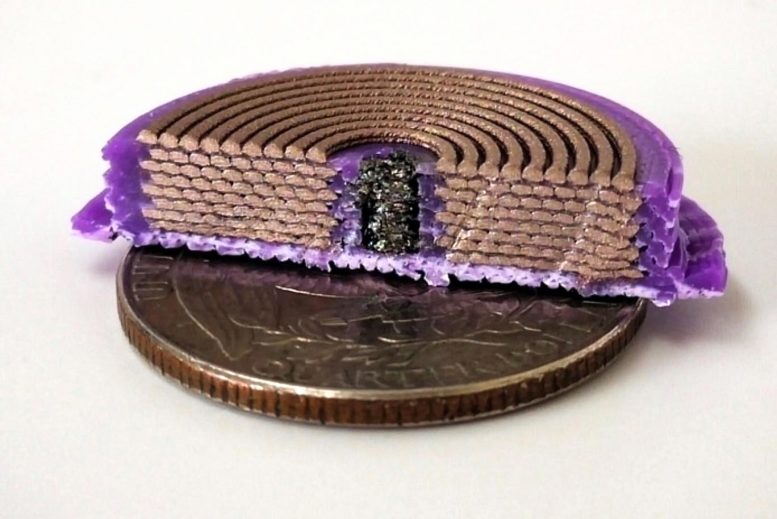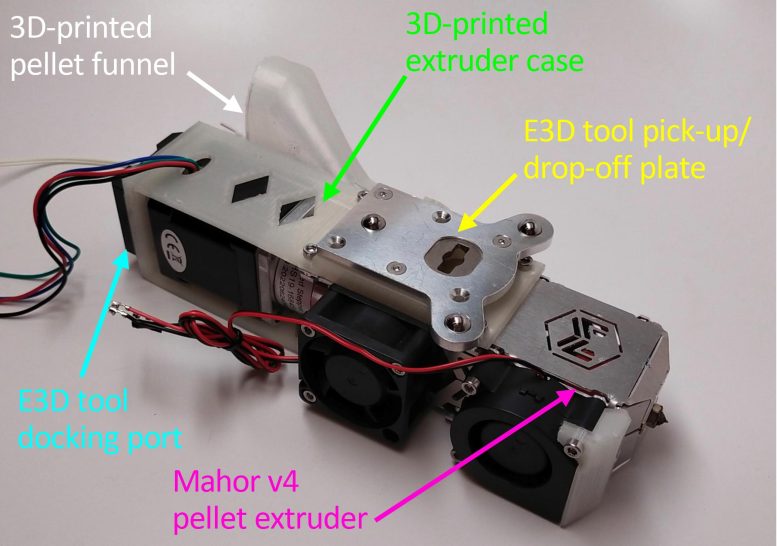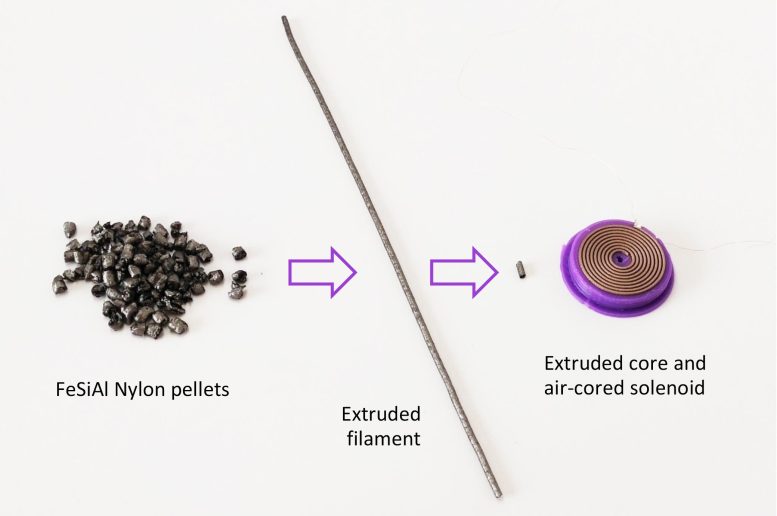
MIT researchers modified a multi-material 3D printer so it could produce three-dimensional solenoids in one step by layering ultrathin coils of three different materials. It prints a U.S. quarter-sized solenoid as a spiral by layering material around the soft magnetic core, with thicker conductive layers separated by thin insulating layers. Credit: Courtesy of the researchers
The printed solenoids could enable electronics that cost less and are easier to manufacture — on Earth or in space.
Imagine being able to build an entire dialysis machine using nothing more than a 3D printer.
This could not only reduce costs and eliminate manufacturing waste, but since this machine could be produced outside a factory, people with limited resources or those who live in remote areas may be able to access this medical device more easily.
While multiple hurdles must be overcome to develop electronic devices that are entirely 3D printed, a team at 
The researchers modified a multimaterial 3D printer so it could print compact, magnetic-cored solenoids in one step. This eliminates defects that might be introduced during post-assembly processes. Credit: Courtesy of the researchers
In addition to making electronics cheaper on Earth, this printing hardware could be particularly useful in space exploration. For example, instead of shipping replacement electronic parts to a base on 
Solenoids are produced by precisely layering three different materials — a dielectric material that serves as an insulator, a conductive material that forms the electric coil, and a soft magnetic material that makes up the core. The soft magnetic material the researchers used, which is in the form of pellets, achieves higher performance than filament-based materials. Credit: Courtesy of the researchers
“Some people in the field look down on them because they are simple and don’t have a lot of bells and whistles, but extrusion is one of very few methods that allows you to do multimaterial, monolithic printing,” says Velásquez-García.
This is key, since the solenoids are produced by precisely layering three different materials — a dielectric material that serves as an insulator, a conductive material that forms the electric coil, and a soft magnetic material that makes up the core.
The team selected a printer with four nozzles — one dedicated to each material to prevent cross-contamination. They needed four extruders because they tried two soft magnetic materials, one based on a biodegradable thermoplastic and the other based on nylon.
Printing With Pellets
They retrofitted the printer so one nozzle could extrude pellets, rather than filament. The soft magnetic nylon, which is made from a pliable polymer studded with metallic microparticles, is virtually impossible to produce as a filament. Yet this nylon material offers far better performance than filament-based alternatives.
Using the conductive material also posed challenges, since it would start melting and jam the nozzle. The researchers found that adding ventilation to cool the material prevented this. They also built a new spool holder for the conductive filament that was closer to the nozzle, reducing friction that could damage the thin strands.
Even with the team’s modifications, the customized hardware cost about $4,000, so this technique could be employed by others at a lower cost than other approaches, adds Velásquez-García.
The modified hardware prints a U.S. quarter-sized solenoid as a spiral by layering material around the soft magnetic core, with thicker conductive layers separated by thin insulating layers.
Precisely controlling the process is of paramount importance because each material prints at a different temperature. Depositing one on top of another at the wrong time might cause the materials to smear.
Because their machine could print with a more effective soft magnetic material, the solenoids achieved higher performance than other 3D-printed devices.
The printing method enabled them to build a three-dimensional device comprising eight layers, with coils of conductive and insulating material stacked around the core like a spiral staircase. Multiple layers increase the number of coils in the solenoid, which improves the amplification of the magnetic field.
Due to the added precision of the modified printer, they could make solenoids that were about 33 percent smaller than other 3D-printed versions. More coils in a smaller area also boosts amplification.
In the end, their solenoids could produce a magnetic field that was about three times larger than what other 3D-printed devices can achieve.
“We were not the first people to be able to make inductors that are 3D-printed, but we were the first ones to make them three-dimensional, and that greatly amplifies the kinds of values you can generate. And that translates into being able to satisfy a wider range of applications,” he says.
For instance, while these solenoids can’t generate as much magnetic field as those made with traditional fabrication techniques, they could be used as power convertors in small sensors or actuators in soft robots.
Moving forward, the researchers are looking to continue enhancing their performance.
For one, they could try using alternate materials that might have better properties. They are also exploring additional modifications that could more precisely control the temperature at which each material is deposited, reducing defects.
Reference: “Three-dimensional, soft magnetic-cored solenoids via multi-material extrusion” by Jorge Cañada, Hyeonseok Kim and Luis Fernando Velásquez-García, 20 February 2024, Virtual and Physical Prototyping.DOI: 10.1080/17452759.2024.2310046
This work is funded by Empiriko Corporation.


